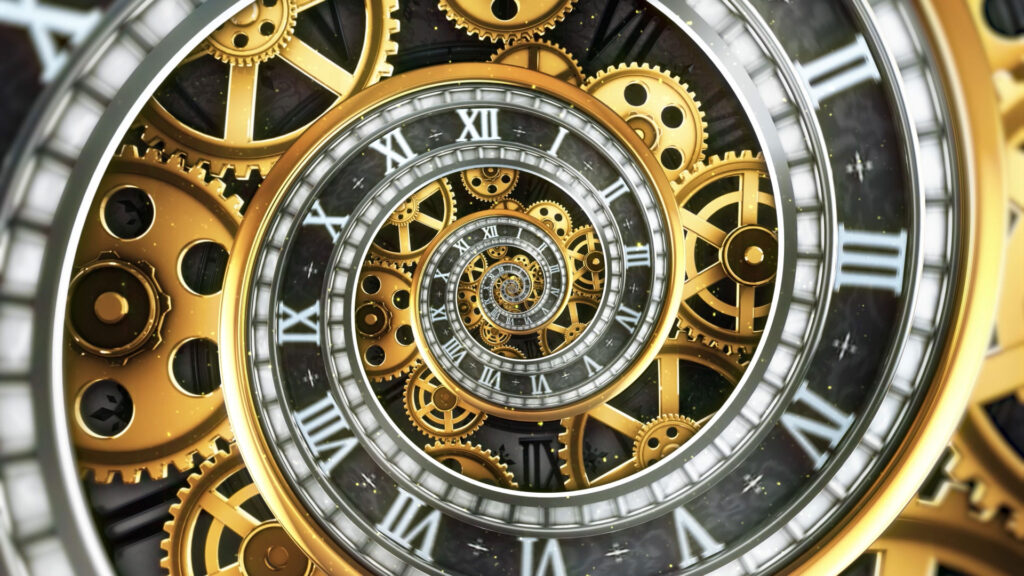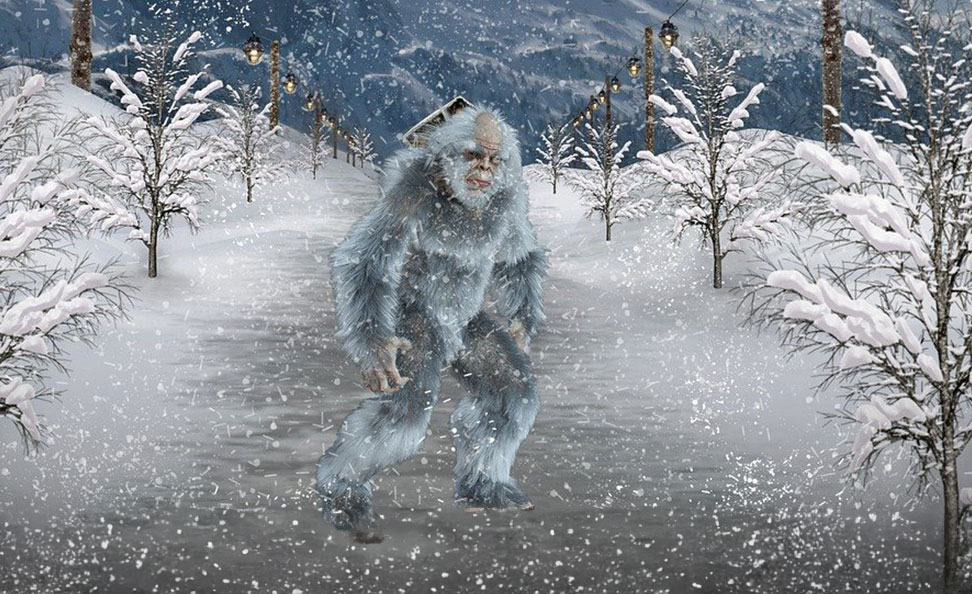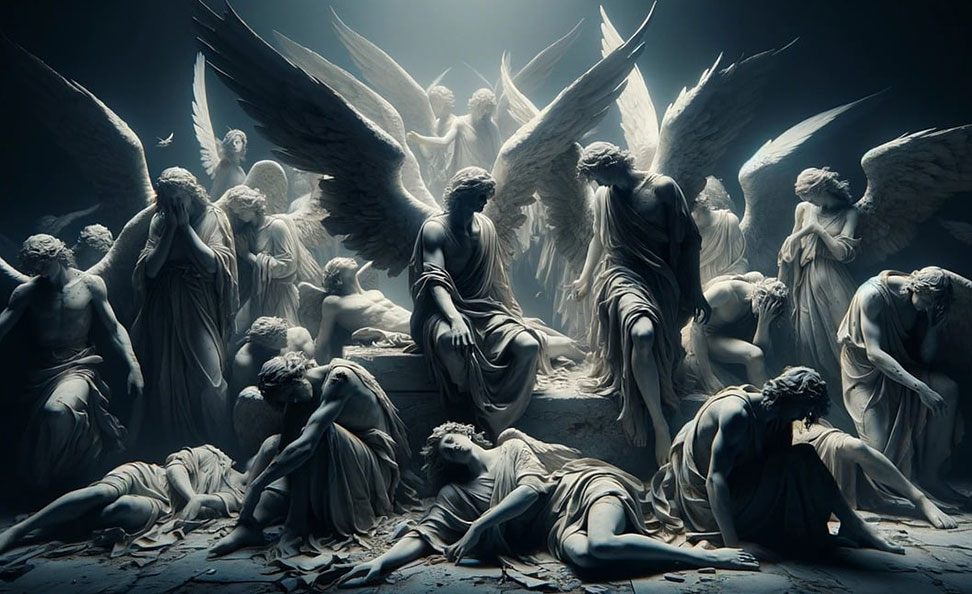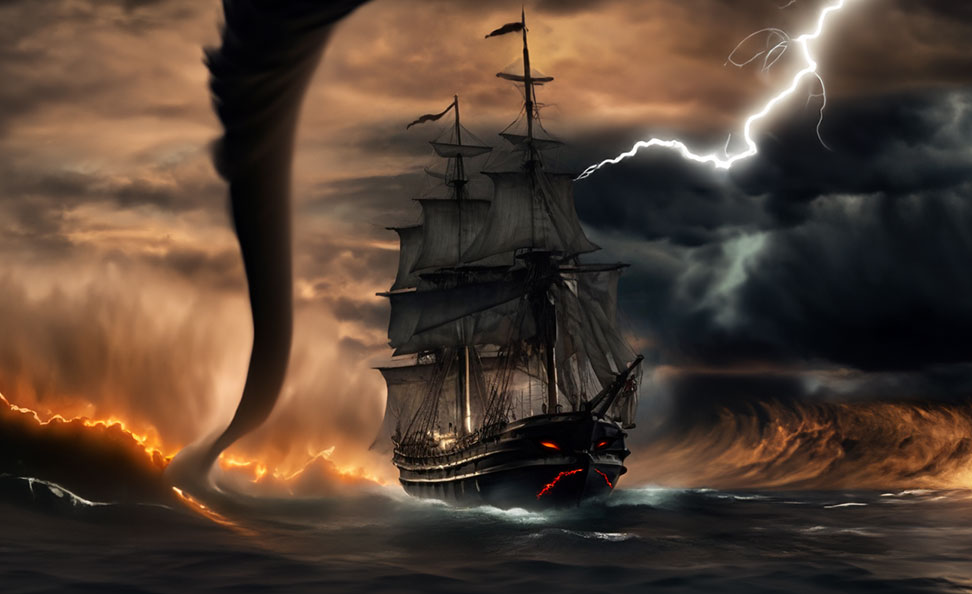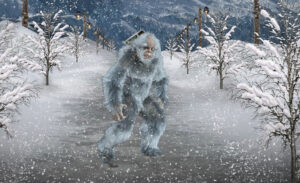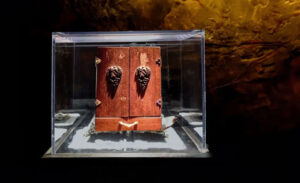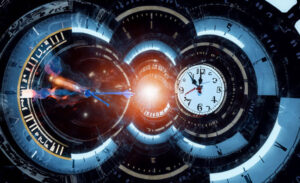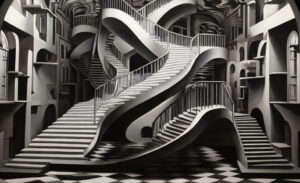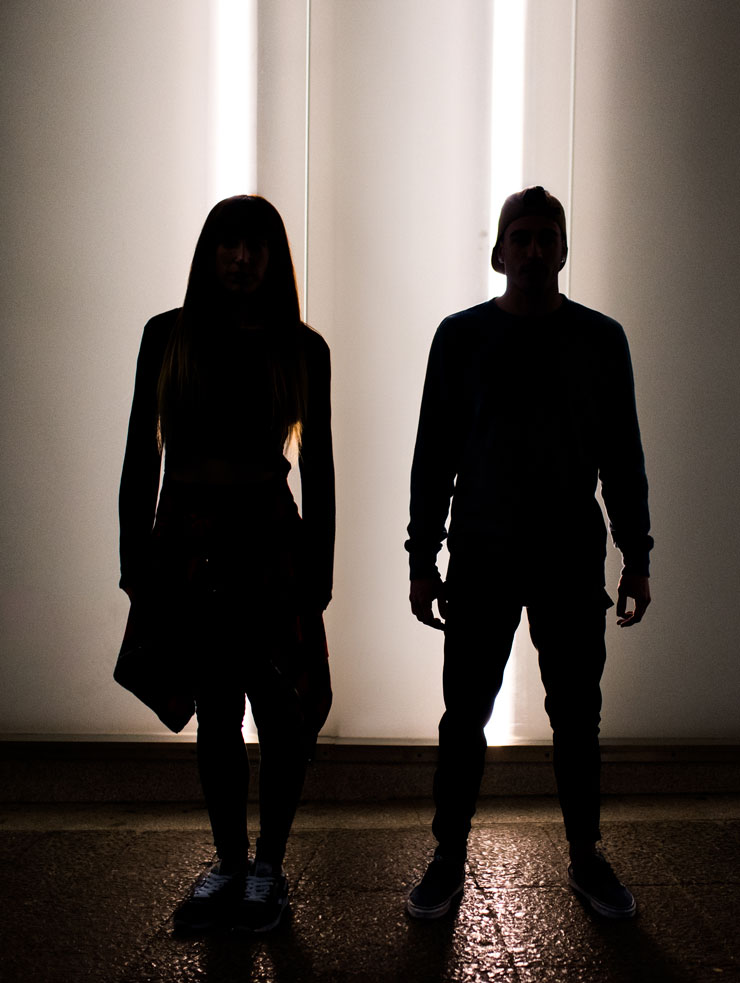Have you ever wondered if the idea of a timeslip or time travel was real? Well, imagine this: You’re on a holiday in Poland, exploring the ruins of a historic castle. Suddenly, you feel a strange tingling sensation, and the world around you begins to spin and blur. Before you know it, you find yourself transported back in time to the 15th century!
Sounds like the plot to a science fiction movie, right? But, that’s exactly what happened to a group of Polish tourists in 2001.
Or so they claim.
They were exploring the Polish countryside, walking through the ruins of Ogrodzieniec Castle.
Ogrodzieniec Castle is in the south-central region of the country and is a popular historic landmark for visitors and locals alike. And suddenly, they were swept back in time.
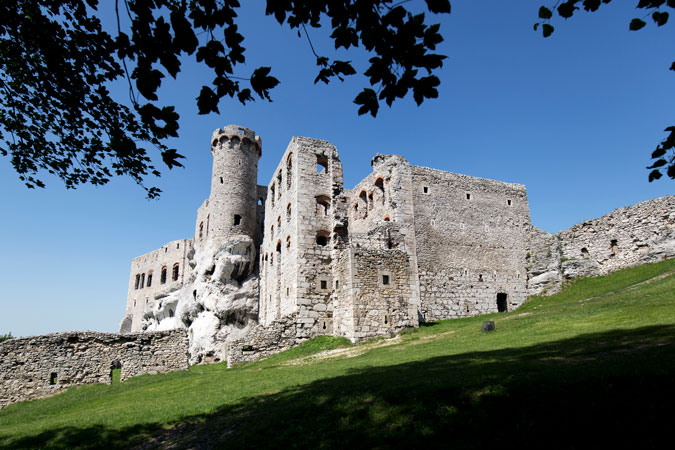
Not just a few years, but several hundreds of years! To the 15th century, to be exact.
This phenomenon of time travel is referred to as a ‘time vortex’ or ‘timeslip’.
A time vortex is a hypothetical region of spacetime where the laws of physics are distorted, and time can flow differently than in the normal universe. Time vortices are often depicted in science fiction as portals that allow for time travel.
They are a fascinating and mysterious topic, but there is still much that we do not know about them. And whether or not they actually exist remains to be seen. However, they continue to be a popular subject of speculation and research among scientists and science fiction writers alike.
And that’s what our tourists said they experienced – a Polish Timeslip.
According to their accounts, they weren’t just sightseeing in the 15th century. Rather, they were a part of it. They interacted with people from that time, even spoke their language! For a few hours, they lived as if they were from that era.
And then, just as quickly as they found themselves in medieval Poland, they were pulled back to their own time. It’s hard to believe. And quite rightly so! How can we be sure this really happened? There’s no science to back this up.
However, the tourists didn’t return empty-handed.
They brought back with them a piece of jewelry that experts say is indeed from the 15th century. Plus, their own memories. These memories were so clear, so detailed, and were unlike what most people recall from such ‘timeslips’.
While skeptics doubt the credibility, others find the evidence compelling. Either way, it remains an intriguing tale that sparks our curiosity and broadens the horizons of thought.
So, fire up your temporal manipulator engines and sit back for a journey through time and space that questions reality as we know it. And let’s explore the story of the Polish Timeslip.
The Time and Place: Setting the Scene for the Unusual
The year was 2001. A group of friends decided to go on a trip. Being from Poland, their adventure began with Ogrodzieniec Castle, one of the largest in the country. Ogrodzieniec Castle sits in Podleskie Voivodeship, a scenic area in south-central Poland.
The ruined castle sits as a reminder of days gone by. But in its prime, it was a grand structure, filled with life and stories.
Little did they know that they were about to stumble upon a secret that would baffle the world. As the group explored the castle ruins, they came across what they described as a distant ‘shimmering portal of light’.
Filled with curiosity, they decided to get close. And that’s when the strange sensation hit them. A strange tingling sensation followed by a sudden pull, and they were tugged through the portal.
The moment they stepped through, they were no longer where they had been. In fact, they were no longer ‘when’ they had been. Everything had changed. From their surroundings to the clothes people were wearing, even armored knights. They described it as though they were walking through the middle ages.
The year – they soon learned, was approximately 1420.
Meet the Adventurers: The Tourists of the Polish Timeslip Story
Anna Kowalska, Marek Nowak, Zosia Wiśniewska, Piotr Wojcik, Anna Wójcik, and Janusz Wiśniewski had gone to explore the beautiful ruins of the old castle without any idea of the incredible adventure that lay ahead.
Anna Kowalska, gives us a glimpse into their medieval escapade. She talks about standing in a field where knights were jousting. She stood as a part of the cheering crowd, watching as the knights charged each other in a jousting competition.
Marek Nowak, recounts visiting the people of a medieval village full of the charm of a simpler time. Describing wooden houses with thatch roofs and simple, hardworking folk who made their own food and clothes. This was not a museum or recreated village for tourists. For Marek, it was all too real!
Zosia Wiśniewska described a taste of the authentic medieval life quite literally. She ate what they ate, her palette embraced the humble yet delicious offering of bread, cheese, and ale. A meal that had traveled through the pages of history!
Piotr Wojcik tried to bridge the centuries with communication. Despite the challenges, he managed to learn a few words in the dialect of the era. Along with the spoken words, he also noted the warmth of the people. The villagers might have been from a different century, but their hospitality was timeless.
Their trip to castle ruins started like any other, but this group of Polish friends found themselves taking a detour not just in location, but through time.
The Tourists' Time Travel Encounter with History
As soon as they crossed through the time portal, everything around them changed. They were no longer inside the ruined castle. Instead, they found themselves in the hustle and bustle of a thriving medieval community.
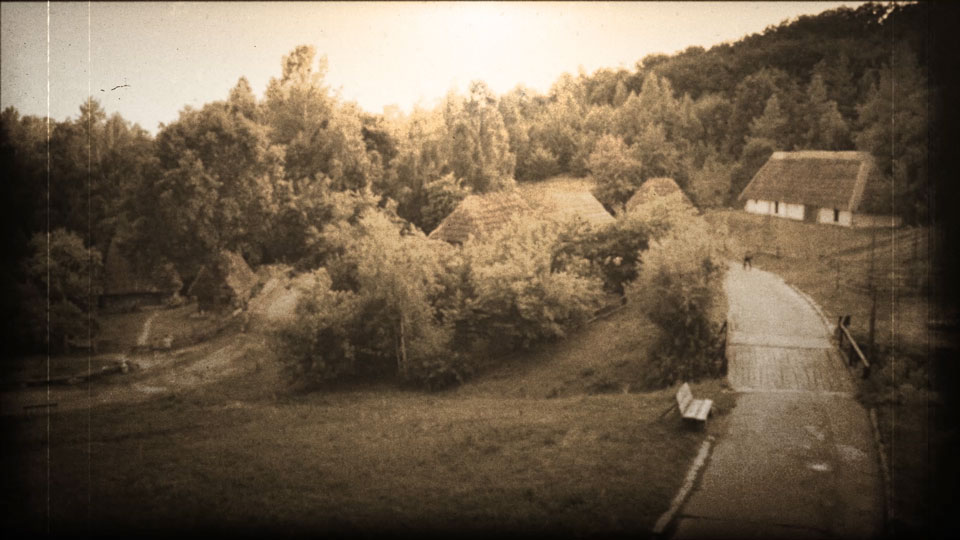
Imagine being in a living, breathing scene straight out of a storybook!
Knights in shining armor competing in jousting tournaments. Villagers bustling about in the markets, wearing old fashioned clothes. The sounds, smells, sights – everything was rich with the essence of a bygone era.
The ‘strange sensation’ they felt at the vortex’s entrance was now replaced with wonder and awe. They were stirred by the simplicity and the honest-to-goodness lifestyle of the 15th century. It was a historic chapter come alive, and they were right in the middle of it!
No science book or encyclopedia could provide the insights they gained from their time travel experience. For a while, they got to live the history that most of us can only dream about. And although it’s a mystery how they ended up in this timeslip, their accounts share a texture of reality which is hard to dismiss.
Engaging with The People of the 15th Century
As Marek recalls, people from the medieval village were keen to welcome the ‘outsiders’. The villagers may not have understood where Marek and his friends were from, but it didn’t stop them from showing kind hospitality. Marek explored their daily life, from farming to their simple art of cooking and crafting clothes.
Zosia had an unforgettable dining experience. She was invited to share a meal with the villagers. Now keep in mind, this was not a time of fast-food or frozen dinners. In the 15th century, food was made from scratch, usually sourced from personal farms or local markets. It was Zosia’s chance to taste food in its most honest form.
The experience was even more special for Piotr. Not just a spectator, he was an enthusiastic participant. Despite the language differences, he managed to speak with the folks of the past. He learned basic yet essential phrases, like greetings and courtesies. It’s not every day one gets to learn a language from people of a bygone era! Piotr found the people warm, friendly, and eager to share their life and language.
Through the accounts of our tourists, we get a closer look at the 15th century’s life and people. It may have been a time without modern conveniences, but it was brimming with community spirit and simplicity.
Their interactions with the people of the past were a significant part of the adventure. Unlike most time vortex experiences, they didn’t just observe the culture—they were immersed in it. They weren’t just spectral visitors —they became a part of the community, even if for just a brief period.
The Evidence Supporting Their Timeslip Claim And The Argument Against
One of the most compelling pieces of evidence comes from an object. A ‘souvenir’ that traveler Anna Kowalska claimed to bring back. It wasn’t a t-shirt or a fridge magnet but a piece of jewelry, a unique trinket that definitely looked out of place in our 21st century.
Experts inspected this intriguing piece. Their verdict? They confirmed that it matched the style and craftsmanship seen in the 15th century.
But physical evidence isn’t all they brought back. They carried vibrant memories full of details. Details about the people, their clothes, even the dialect from the 15th century. If this were a dream or a simple mishap, how could they depict things so vividly?
The friends could remember shared meals, jousting events, the village layout, and more. All of these were very different from what the castle they knew in their modern lives.
And these detailed memories are unique. Why? Because most people who recount a timeslip can only recall hazy fragments. Bits and pieces. But our tourists? They had vivid and cohesive memories from their experience. It was as though they had lived every single moment!
Likewise, after multiple interviews, their stories remained consistent. They passed lie detector tests and even hypnosis sessions. Their conviction remained firm – they had visited the 15th century!
However, science hasn’t found a sure fire way of proving or debunking time travel. The Polish Time Vortext leaves us with many questions and debates. What’s real? What’s not? Was it a historical journey, a strange anomaly, or a well-spun and carefully crafted yarn?
Doubts and Disputes: The Skeptics Speak Out
Tales of the unknown are often met with suspicion. The story of the Polish timeslip is no exception. It has sparked debates between believers and skeptics, creating a whirlwind of controversy just like the time vortex itself.
Many people find it hard to accept the idea of time travel. The very concept challenges our understanding of the world and the way the universe works. Our logic is anchored in the scientific world, where the laws of physics say time travel isn’t possible.
Scientists, in general, express a high level of skepticism towards the story. They point out that even if time travel is possible, it would need advanced technology beyond what we currently have. To them, the idea that a group of people could accidentally stumble upon a time vortex seems unlikely.
Critics question the authenticity of the evidence given by the tourists; the medieval jewelry, the detailed accounts, and the experiences in the 15th century. They argue it could all be a well-orchestrated hoax or an example of mass hysteria where people convince themselves something has happened because others say it did.
Then, there’s the issue of the inconsistent details. The exact date the tourists were allegedly transported back in time varies which each telling of the story.
Questions also arise regarding the tourists’ understanding of old Polish; a language which has drastically evolved over centuries. These incongruities fuel the skeptics’ doubts and leave room for argument.
The fact that the group of friends chose to hide behind a cloak of anonymity is another red flag for skeptics. Critics argue that if the event was genuine, why hide their identities? They claim that a legitimate time-travel experience would be revolutionary and concealment would not be the first choice.
Even in the face of these criticisms, some people do believe the story of the Polish timeslip. Many prefer to keep an open mind and marvel at the possibilities. Supporters often cite the consistency of the tourists’ accounts under lie detector tests and hypnosis, adding credibility to their claim.
These believers argue that our understanding of physics is still limited. As history has shown, many scientific impossibilities of the past have become today’s technological realities. Thus, they insist that dismissing the story solely based on our current understanding of science could be shortsighted.
The story of the Polish time vortex has stirred a curious mix of fascination and doubt. Despite the skepticism and controversy, the true believers maintain their stance. And skeptics continue to voice their doubts, awaiting more convincing proof. It’s an enduring dialogue, much like the timeless tale it’s about. As with every mystery, different perspectives fuel the conversation, making it all the more intriguing.
Whether the story is a leap of imagination or a step into the unknown, it continues to provoke thought and spark wonderment. The clash between belief and skepticism adds another layer to the intriguing enigma, leaving us in a fascinating swirl of questions.
Inconsistencies in the Time Travel Tale
With any tale as incredible as the Polish time vortex, differences in the details has raised some eyebrows. Critics were quick to point out these inconsistencies.
The first inconsistency is the exact year to which the tourists reportedly traveled. Was it the early 1400s or the latter part of the 15th century? This is not a minor detail. It’s a whole different time in history. This variation in their stories provides skeptics with a strong argument that the tale could have been made up.
Next, are the claims about the language. We know that language evolves over time. How were the tourists, with their 21st-century Polish, able to communicate so easily with people from 600 years ago? Critics argue it’s highly unlikely they could understand and even learn the medieval version of their language within such a short time.
Then there’s the question of the medieval jewelry one of the friends claimed to bring back from the past. If this were true, it would provide hard evidence supporting their story. However, skeptics argue that it’s possible to find or make replicas of such items in today’s world. Without proper verification from multiple independent experts, this piece of evidence remains questionable. And the bigger question is where is it and why can’t we examine it?
Skeptics also pointed out that the tourists’ accounts seem too planned and too well aligned with popular notions of the 15th century. Critics argue this suggests a well-researched creation rather than an actual experience. They view the travelers’ rich narratives as rehearsed and artfully tailored to convince of the impossible.
Finally, the choice of the tourists to stay anonymous raises doubts too. Many skeptics see this as a way to avoid in-depth scrutiny that could expose flaws in their tale. If the story were true, wouldn’t the tourists be eager to prove their extraordinary experience to the world and contribute to the field of science?
Theories & Explorations Concerning Time Travel & a Timeslip

The concept of time travel has intrigued minds for centuries, drawing both curiosity and skepticism. Yet, when confronted with accounts, such as those from the Polish Timeslip, this branch of science fiction seems to manifest into reality.
One potential method of time travel that scientists propose is through ‘wormholes.’ These theoretical passages through spacetime could potentially link separate points in time, much like a cosmic bridge. Just imagine stepping from one room to another, but instead, you’re stepping from one era into another.
Then we have Albert Einstein’s acclaimed ‘Special Theory of Relativity’, which alters our conventional perception of time. According to Einstein, time is not uniform; it could dilate or contract based on the speed at which one is moving relative to another observer. Hypothetically, if we could harness this concept, we could potentially traverse through different time frames.
Another formidable physicist, Stephen Hawking, put forth the idea of unidirectional time travel. In his perspective, time travel into the future is plausible, however, venturing into the past remains confined to the realm of fiction. This theory hinges on moving at near-light speeds, a feat currently beyond our technological capabilities. However, this doesn’t imply that it’s permanently out of our reach.
Popular culture, on the other hand, presents an array of time travel depictions, varying from magical amulets to engineered machines. While these portrayals serve to entertain and intrigue, they often lack the scientific base required for honest consideration.
The Polish Timeslip & Its Place in Supernatural and Paranormal Discussions
When we think about the supernatural or the paranormal, we usually think about ghosts, aliens, or strange creatures. But the story of the Polish Timeslip brings into the whole new supernatural realm of time travel.
Timeslips are hypothetical events in which a person or object is unintentionally transported through time.
However, there is no scientific evidence to support the existence of a timeslip.
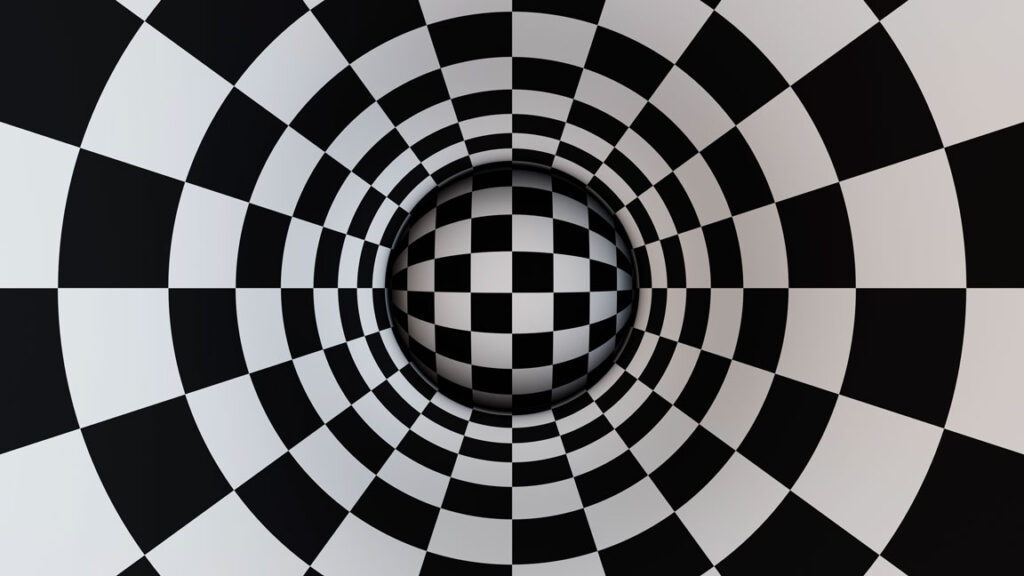
The laws of physics as we currently understand them do not allow for travel through time. Additionally, there is no consistent pattern to the reported cases of timeslips, and many of them can be explained by other factors, such as misremembering events or experiencing hallucinations.
Despite the lack of evidence, the concept of timeslips continues to be popular in fiction and folklore. This is likely due to the fact that the idea of time travel is inherently fascinating to humans. We are naturally curious about the past and the future, and the idea of being able to travel through time would allow us to experience both firsthand.
The concept of a timeslip fits into the broader category of the unknown, paranormal, and supernatural. These are all areas of human experience that we do not fully understand, and they are often associated with a sense of wonder and mystery. The idea of a timeslip is particularly appealing because it suggests that there may be more to reality than we currently know.
Whether or not timeslips are real, they are a testament to the human imagination and our desire to explore the unknown.
Unanswered Questions About Time Travel
Is time like a river, flowing in one direction? Or is it fluid, like the tides, moving back and forth? These questions boggle our minds. And as far as I know, we don’t have the answers. But the story of the Polish Time Vortex makes us think about it.
The Polish tourists claimed something astonishing. They claimed that they traveled back in time, to the 15th century. They saw medieval people. They experienced and interacted with them. They even talked to them. Subtle details in their accounts hint they might be telling the truth.
Regardless, this event opens up many unanswered questions. Can we move back and forth in time? Is time a line or a loop? Or is it amorphous, constantly changing shape?
And what exactly is reality? Imagine being in the 15th century one moment, and in the next one, back to the 21st century. The mind-bending experience of the tourists shows how reality could shift within seconds. It’s like stepping into a vivid dream and then waking up, but with actual proof of that dream.
The story also hints at the existence of parallel realities.
This notion is spiritually thrilling and scientifically puzzling. The encounter of the tourists with the 15th century invites us to ask – could there co-exist a string of realities, each tied to a different era? And if yes, could we possibly jump from one string to another?
And then there is the concept that time doesn’t exist at all. It’s a human construct and everything that has ever happened, everything that is currently happening, and everything that will happen in the future … happens all at once, at the same moment.
It really hurts to think about it.
Mystical Finale
One thing is clear. True or not, the story of the Polish Timeslip is a catalyst. It thrusts us into a new dimension of thought. It takes us face to face with questions about time and reality, questions we might not have considered. It brings with it a wave of curiosity. An urgency to seek answers. Answers to the riddles posed by time itself.
In the end, and ironically, only time will tell if time slips and vortexes are possible. Or if they are mere tales spun by wandering minds.
Until we can prove it, the case remains a fascinating snippet of the never-ending tangle of time and reality.

